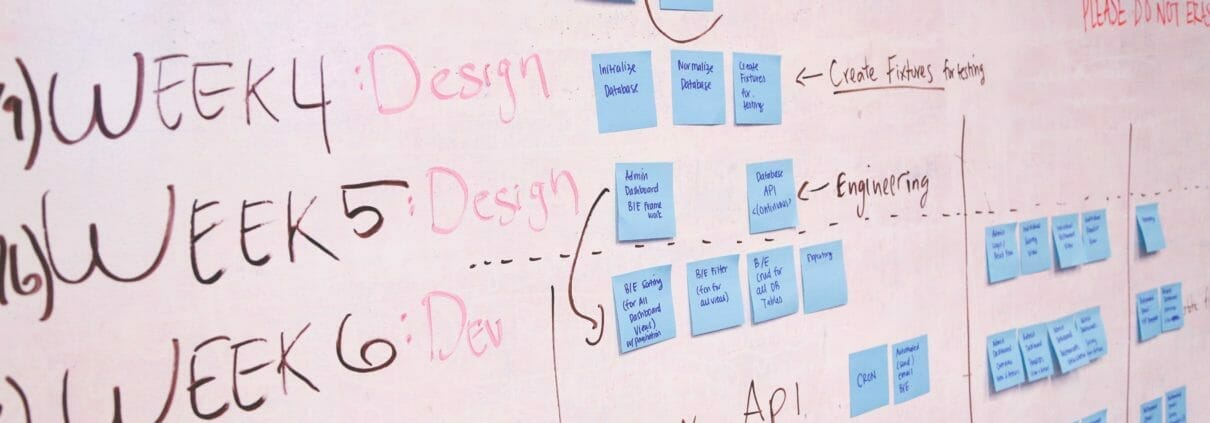MVP + Agile methodology
Developing a MVP app using the agile methodology of project management is a powerful combination for any enterprise, appreneur, or startup seeking to prove the validity of their idea. Before we get into this combination, however, let’s first look into what a MVP is, as well as agile methodology.
What is a MVP?
A MVP (in regards to app development) is an app that utilizes the smallest number of features possible in order to a) cut the time of production, b) reduce the total cost of development, and c) gain customer validation and insight.
MVP stands for:
Minimum – the minimum set of features a product can have while still remaining…
Viable – to provide value to customers, so they are willing to engage with the…
Product – which is ready to be used for consumption.
While a MVP app is a great way to get to market both faster and cheaper than a conventional app, the true value is the customer insight a MVP provides. Due to the utilitarian nature of a MVP app’s feature set, early adopters of your app are able to request additional features based upon the core functionality of your app, and you don’t send time backtracking and re-developing entire sections of your codebase in order to replace features your users didn’t even want.
The feedback your MVP will receive will also be much more precise and reliable than if you were to spend resources conducting preliminary product focus groups; customers will use your app in many different situations and settings, will compare its usefulness to other apps they use regularly, and will have more time to engage with your app before providing feedback.
What is Agile?
Agile is a widely-popular methodology for app development. Agile development, at its core, is about incremental improvements; teams work in sprints to complete objectives, such as “successfully implement in-app payment,” or “build out user profile UI.” During these sprints, developers will meet to discuss what they have accomplished, and what they are stuck on.
A developer’s code will be tested, and after passing code review, will be added to the true codebase of the app, known as the master branch. Once an objective has been successfully implemented, the team will move on to the next feature. Over the course of development, this process will continue until a complete app is built.
The benefits to an Agile method of development are numerous, but three stick out: speed, reliability, and adaptability. This development methodology is fast because code isn’t implemented until it is tested and reviewed, therefore creating a robust codebase, which allows for easy post-development updating.
Due to these aforementioned benefits, Agile methodology has practically become a standard for developers; each dev shop will put their own twist on things, but the overall process of adding to the master branch incrementally remains largely intact. With user retention being so closely entwined with app updates, having a reliable and structured codebase like that provided by Agile is important; developers often must push out app updates on quick timetables when a new OS releases, or a new device is released to market.
MVP + Agile
Just like Agile, MVPs are based around quick development cycles, and just like MVPs, Agile methodology revolves around improving a codebase via continual, incremental updates. Due to their overlapping nature, these two methodologies fit perfectly together, and create a development environment that is both highly stable and cost efficient.
In order to successfully merge these two methodologies, you will need to make use of careful planning to ensure product market fit. While every app will face different development hurdles, and therefore travel a different path, a MVP app developed in an Agile environment should include the following steps after the initial development cycle:
1 – Testing
Testing is the number on step on this list for a reason – without it, all the following steps are based on flawed data. Apple makes conducting a beta test simple with TestFlight, a service which allows you to host an app for a limited beta test release.
This is why we recommend developing your MVP app for iOS.
This gives you the environment you need to allow beta test users to download and engage with your app. In order to ensure your beta test has enough participants, you’ll want to cultivate a following on social media beforehand.
2 – Community engagement
By engaging with your early adopters, you can drastically reduce the total cost of your app’s development through crucial customer insight. This benefit is the reason so many big names in the tech industry started out as MVPs: Google, Airbnb, Dropbox, Buffer, Uber, Facebook, and Snapchat, to name a few.
The crucial aspect to customer insight is true customer engagement. Throughout your beta test, respond to criticism and compliments alike – and when users request a feature, implement it. If a user leaves a rating and review after your MVP has launched on the App Store or Google Play, respond, and if they have requested a fix, implement that fix.
By showing this level of care, you will ensure the customer feedback you are receiving is truly insightful – while simultaneously creating an engaging and value-producing product.
3. Continual updates
Going hand-in-hand with step 2, continual updates are key to any app’s user retention metric. Users are constantly demanding new innovation and a better experience – which is a huge driving factor behind the need for UI design updates. Security risks play a significant role in this as well.
Incremental, insightful improvements
With a MVP product developed using Agile methodology, you are ensuring the development of your app is both fast and cost effective; with direct and low-cost customer insight and structured code implementations leading to robust user experiences, your app can quickly collect and retain a growing audience that both proves the value of your product and adds to it.





Leave a Reply
Want to join the discussion?Feel free to contribute!